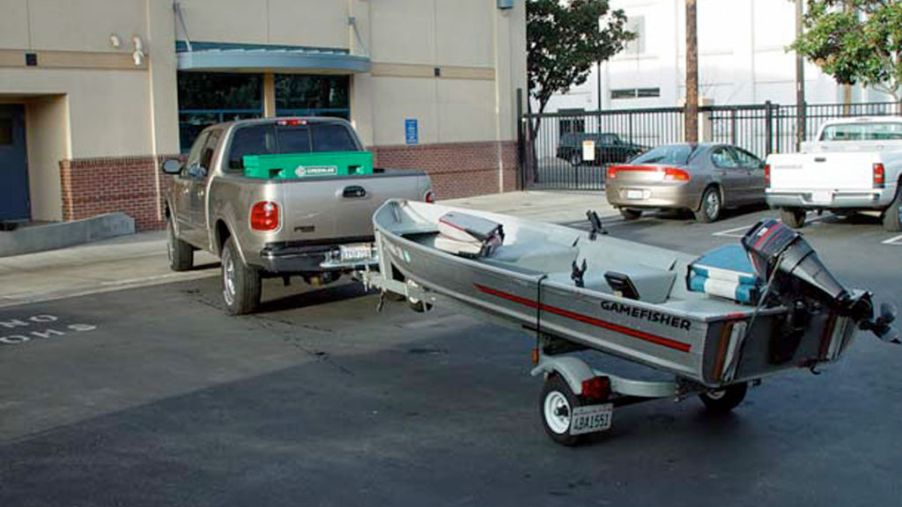
How to Stop Your Ford F-150 From Squatting When Hauling or Towing
The Ford F-150 is currently the best-selling pickup truck on the market, and with good reason. It has a roomy interior, powerful engine options, and some of the best hauling and towing capacities. When fully loaded, the F-150 can tow up to 13,200 pounds and has a maximum payload of 3,300 pounds.
The F-150 is definitely a powerhouse, but when you’re pushing a truck to its limits, there’s always the chance that this may decrease the vehicle’s performance over time. Even the toughest trucks can fall victim to squatting while trying to transport wide loads. Here’s what you need to know about squatting and how to prevent it on your F-150.
What is squatting?
Truck squatting, also known as trailer sag, is when you can visibly see an excessive amount of stress on the truck’s rear axle. This causes the front of the truck to point upward while the back end remains in a low position, making it unable to tow the trailer properly. When this happens, you’ll have to make more forceful and corrective steering maneuvers to keep the trailer in control.
A little sagging is normal when you first hook up the trailer to your pickup truck. Once it’s attached, the trailer will engage the leaf springs on the truck and straighten out the load. However, these springs can only be activated if the load is dropped down several inches. If your trailer doesn’t sink down far enough, the springs won’t work and the trailer will sag along the road.
How do I know if my trailer is sagging?
Squatting is very noticeable from outside the truck, but it’s not always easy to see how badly you’re truck is squatting while you’re behind the wheel, especially if your truck has a high driving placement already.
If you notice that your trailer is more wobbly than usual, it’s probably an indicator that your truck is sagging. Before taking off, look at the trailer closely to make sure that the leaf springs have been engaged.
Potential damage
Driving your F-150 with truck squat not only looks awkward, but it can also affect your truck’s performance. The entire vehicle is now off-balance, which means that you’ll experience steering problems. The wheels won’t be as responsive and your drive will feel very unsteady. The higher position of your headlights could also affect other drivers’ visibility.
Misaligned driving will also cause you to use more fuel than usual due to uneven tire tread, which will also cause your tires to wear down quickly. Your braking distance is also increased and you may find it incredibly difficult to bring the truck to a stop. In a worst-case scenario, your truck may end up bottoming out on the road.
How to stop your Ford F-150 from squatting
One solution is to get new leaf springs. In general, leaf springs on an F-150 are supposed to last for around 200,000 miles. However, if the truck is frequently being used for heavy-duty tow jobs, this could cause the springs to wear down faster. If you a lot of creaking noises from the springs, it may be time to replace them with heavy-duty springs or replacement bolts and hangers.
Another good way to keep your truck from squatting is to install a suspension stabilizer. In general, the F-150 has a very stable suspension, but there have been some issues in earlier models. The stabilizer is fitted directly between the leaf spring and the spring pack, which cancels out the delayed leaf spring response so that the trailer stops sagging immediately. The stabilizer can be switched on or off as needed.



